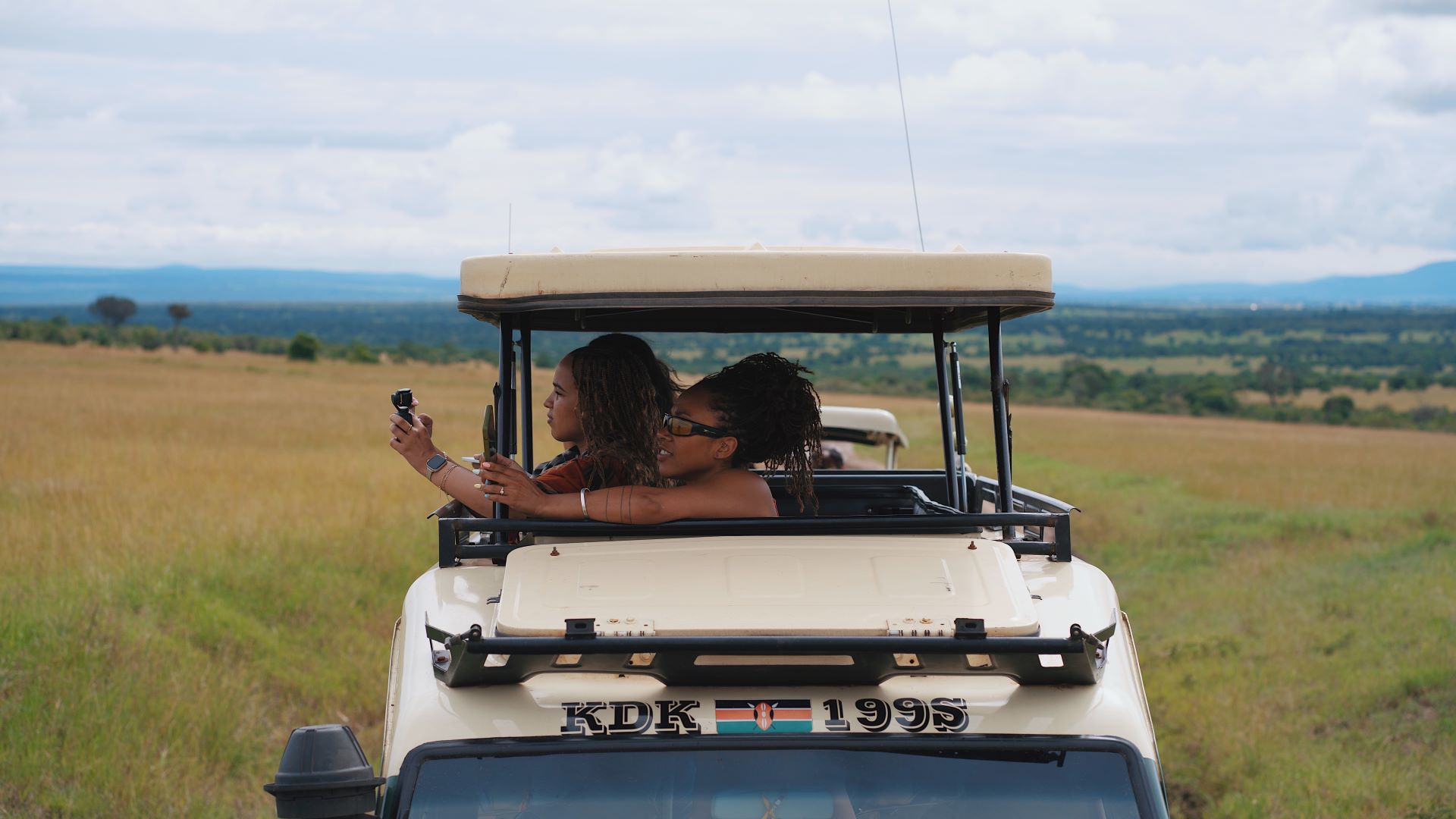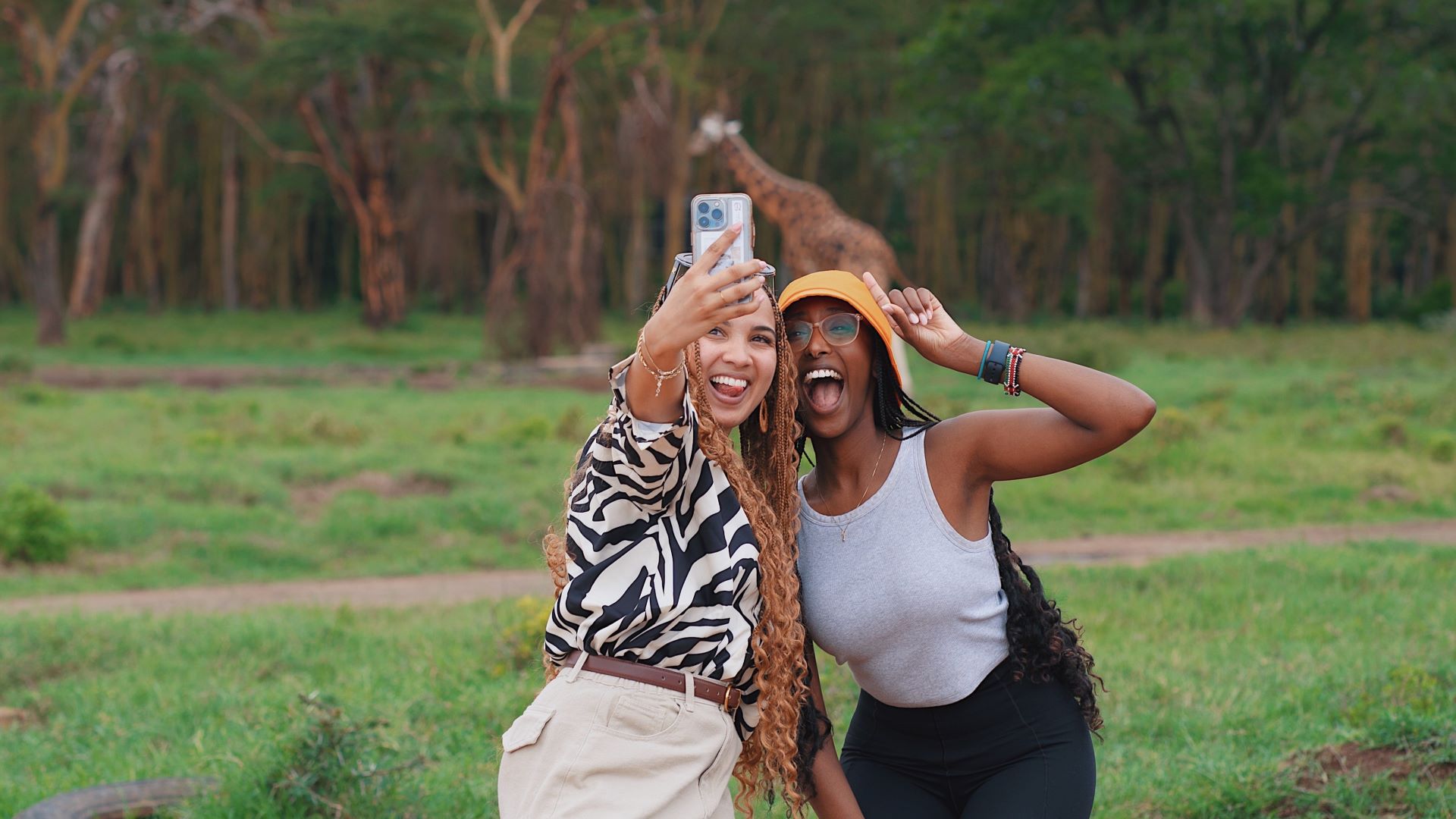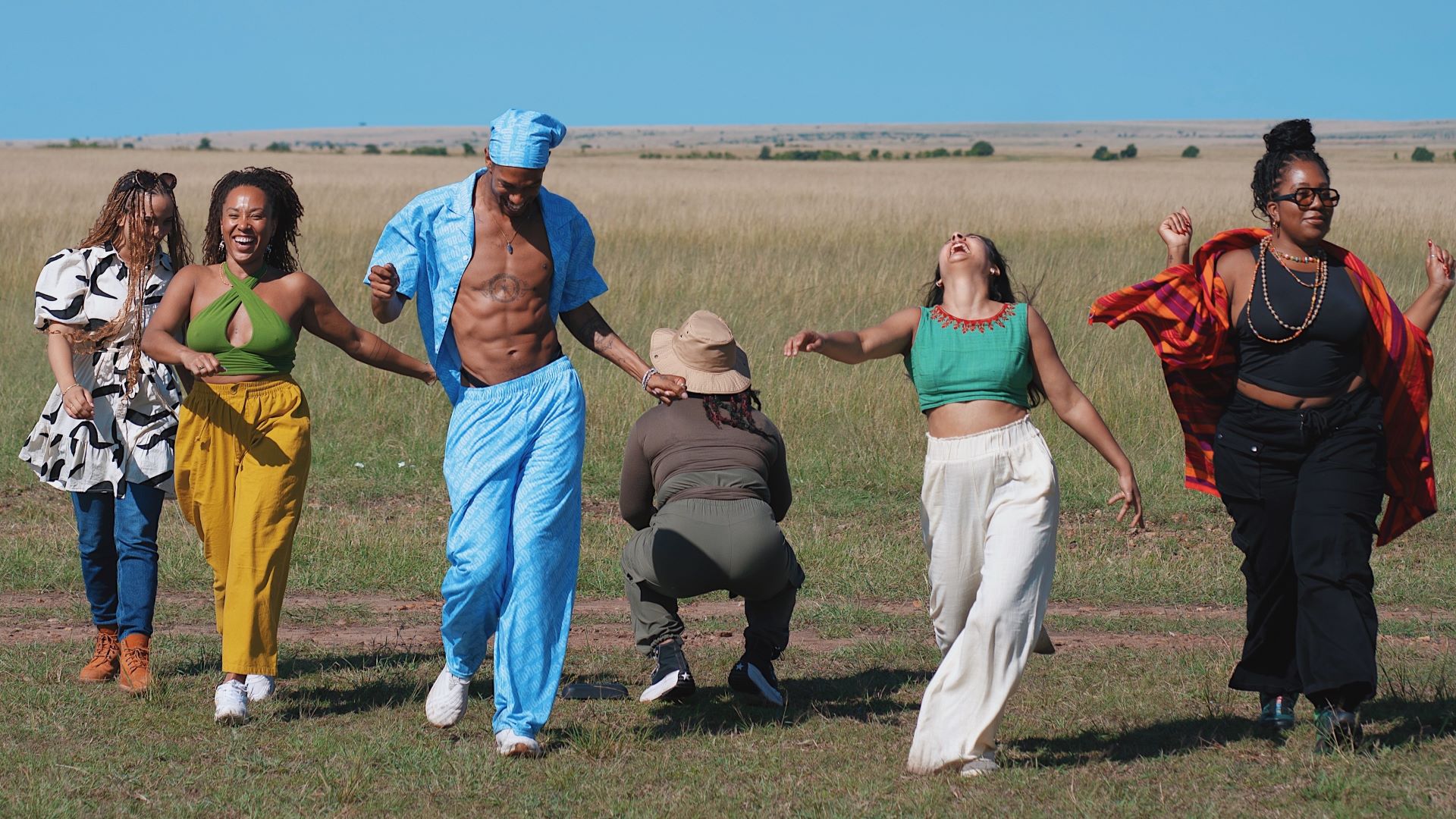It’s nearly 10 p.m. by the time we’ve made the four-hour journey from the capital city Nairobi to Lake Nakuru National Park. Everything around us has fallen dark and silent. For a moment we forget what could be lurking in the distance out in this massive 188-square-kilometre stretch of savanna home to the wildlife I’ve only seen on the Discovery Channel.
I’m worn out from the drive, and for now, my focus is getting to our hotel and slipping into bed. That is until someone makes out the shadow of something slinking just ahead of us.
‘Hyenas,’ our driver Lawince says, nodding towards it. As our truck moves closer, I can see its mangy fur, ash brown and speckled with fat black dots. Something about the sight of it makes me shudder.
‘This means you’re going to have a great safari,’ Lawince says. ‘Seeing a hyena is good luck.’
I wonder if this superstition is rooted in any kind of mysticism, but more likely the hyenas smell prey and there’s a bit of dark irony there.
There are 11 of us on this 7-day safari experience around Kenya. We’re here as a part of Intrepid’s BIPOC mentorship trip for travel creators. As creators of colour in an often-exclusionary industry, we’ve been brought together to share knowledge and resources but also to connect. Most of us have never been on safari, and a few have safaried in other countries but never in Kenya. We’re all experiencing this first together.


The next morning, I dress at dawn in my best “Brooklyn girl goes on a safari” look; baggy cargos, a tee, Solomon sneakers and a Yankees fitted. Before I meet the others for breakfast, I step out onto the back porch of my cabin to watch the sun rise. The air is so fresh and so crisp.
A thick fog hangs over the still lake. Throughout the trip we’d arrive at most places by night, which meant every morning we saw new life. Every morning was a surprise. I take a deep breath and wonder what awaits us today. As soon as the tip of the sun peeks above the horizon, as if on cue, about 100 creatures I can’t name burst into song.
I will admit, I don’t consider myself an animal enthusiast, per se. I’m not one of the girls that feels like an elephant is my kindred spirit, you know? But there is something absolutely brain chemistry shifting about being in close proximity to an animal out in the wild, albeit from the safety of a Landcruiser. It’s a sight your eyes can’t fathom; it takes a second to register.
Almost as soon as we pull out of the hotel grounds and into the park we are greeted by a pack of zebras. I become completely enamored by them. The stark contrast of the black and white stripes on their skin, how each pattern is unique, intentional almost. The way they look like horses but, also don’t? We press our faces to the glass and watch them in silent awe before launching into a debate about whether they are white with black stripes, or black with white stripes. After giving us time to contemplate, Lawince tells us it’s time to move on.
‘Zebras are another one of nature’s flowers,’ he says. And I laugh thinking what a poetic way to say they are beautiful, but they are everywhere. A dime a dozen.
Lawince explains that the real focus of a Kenyan safari is the Big Five: leopards, rhinos, lions, buffaloes and elephants.
‘I hope we see giraffes, too!’ Someone quips.
And only a few moments later, when we stop for a bathroom break, a giraffe walks right past us. Like right there! I think about the thrill of the find and the random luckiness of it, which really might just be the randomness of nature.


While we wait for the bathroom, some of us break out into song and dance. Beyonce’s Cowboy Carter had just come out and it became our default soundtrack. I look out at our group; young, fly, Black and Brown, deeply curious about the world around us and free. It’s a powerful sight.
A safari is a bucket list experience for so many, and here we are. This trip is something I could’ve only dreamed of. And as our journey continues, we’ll notice how we’re some of the only travellers of colour out there. Most of the other trucks we pass are filled with seemingly wealthy, older white people. How unfair that they can more readily access these experiences in our Motherland, when so many that look like us can’t. If anyone deserves to be here, we do. Not to mention Kenyans themselves. As I watch white faces pass us by in neighboring trucks – sometimes staring at us as if we’re our own type of natural wonder – I find a different kind of safety within our Landcruiser, one that can only be found when in community.
Lawince must’ve been right about the hyena, because we saw all of Kenya’s Big Five on our game drives. Plus, giraffes and ostriches and monkeys and so many birds. Every time we spotted something our voices instinctively dropped to a hush, so as not to scare them off, but also in an unspoken respect. Sometimes, though, it was hard to contain our glee, it was childlike – everyone’s faces lit right up with the silliest joy.
Being out there makes you realize just how many things are alive, and you think about how there must be an artist at work because how else do you explain the feeling of witnessing a tornado of pelicans in the sky, or the way zebras dot the plains like bunches of black and white flowers.


When I get back to Brooklyn, I try to put all this into words for my friends, but I struggle to really convey the feeling. I swipe through pictures of lions and leopards and even in the recounting it feels surreal. It’s almost like I dreamed the whole thing.
I realize going on safari is really one of those experiences you have to have for yourself. And I deeply hope that one day my friends back home will. For now, I hold onto the knowledge that the memory is alive among my newfound tribe. A shared experience and connection that we’ll all forever keep close.
Find your own unforgettable safari adventure.



